Best Time to Visit Yosemite National Park in 2025
Last Updated on February 10, 2025
It’s hard not to hear about the wonders of Yosemite National Park. While it’s mostly renowned for its cascading waterfalls and unique mountain range, every season transforms the park’s region into vastly different worlds. Most visitors are recommended to come around summer, but I think the park offers all sorts of splendors in all different seasons.
These are some things you should expect when visiting Yosemite National Park across all four seasons.
This post may contain affiliate links. I may receive a commission for purchases made through the included links. I will only recommend products and companies that I personally trust and recommend.
Yosemite in Winter
Yosemite’s Winter season begins sometime in November or December and ends around March. Most guides would recommend visiting the park during the warmer seasons due to fears of challenging weather conditions in the winter. However, Yosemite National Park is incredibly beautiful covered in snow and ice. Coupled with the fact that not many crowds visit this season, there’s a sentimental air around the park that can feel quite romantic.
Why you should visit

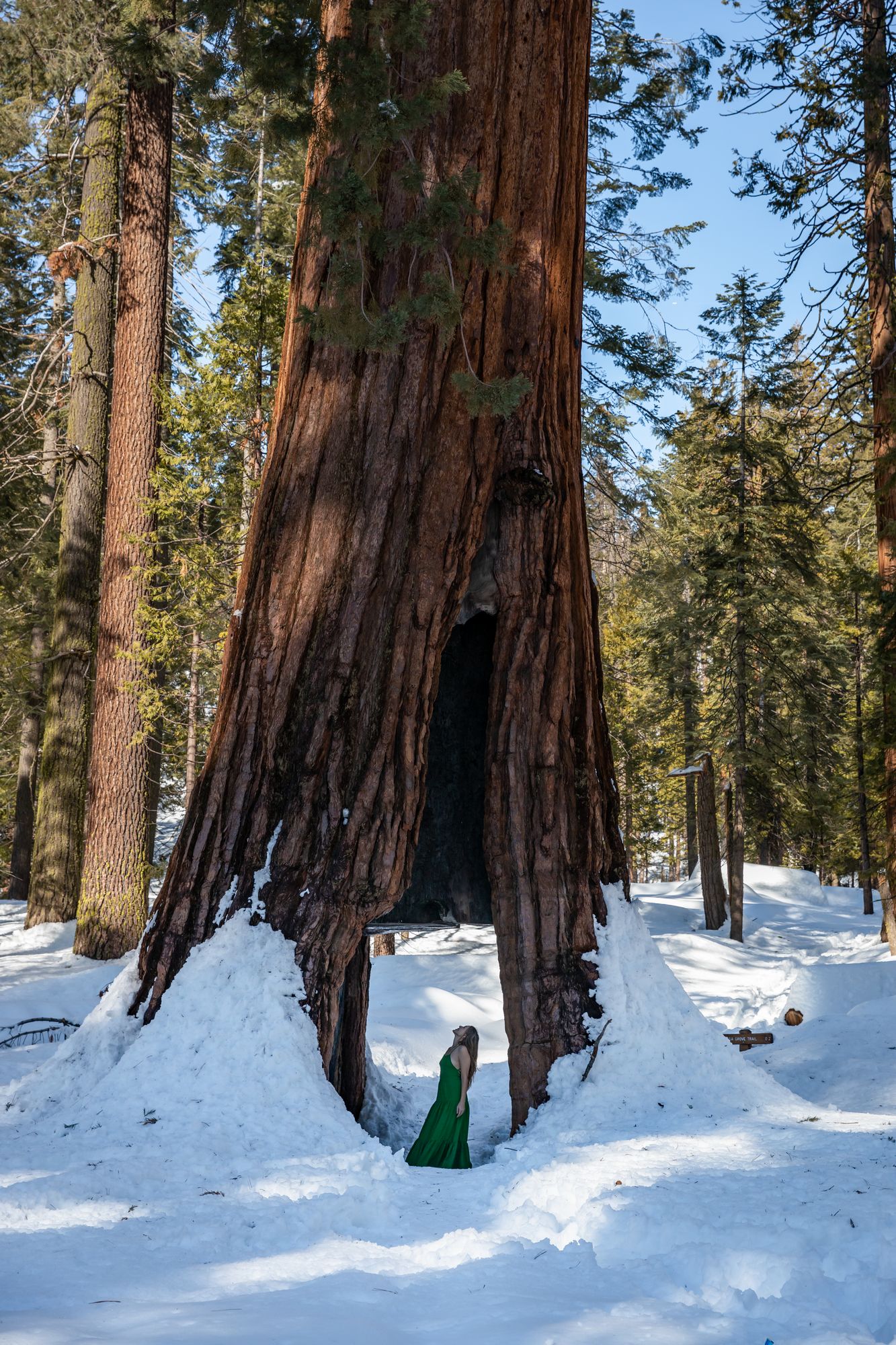

Winter in Yosemite: Sentinel Bridge, Mariposa Grove’s Tunnel Tree, Tunnel View
Winter is my favorite season to visit Yosemite! I highly recommend it to those who want to experience a winter wonderland. The park is completely transformed in the cold. Snow covers the evergreen forests and rock formations, and rivers flow after snowstorms when melting ice starts refilling the waters. I rode up to Tunnel View in the Valley, and I couldn’t believe how breathtaking it all looked from afar.
Most of the time, you also get to enjoy these views in peace and quiet. There are some but not as many people in the park at this time, and you usually won’t need a reservation to visit! Keep in mind that you’ll still need to pay a one-time fee or have a National Park pass to enter.
Winter also brings in many new activities, like skiing. Starting in mid-December, Glacier Point Road and Badger Pass Road are remade into the Badger Pass Ski Area. It’s perfectly tailored for cross-country and downhill skiing, as well as other activities like snowboarding, snow tubing, and snowshoeing.
This season is also the only time you can witness one of Yosemite’s most fascinating natural wonders: Firefall.
On the eastern edge of the El Capitan rock formation, you can find Horsetail Falls, a little waterfall that only flows in winter and spring. When the sun sets in the cold of February, a unique phenomenon called the Firefall occurs in the quaint flow of these falls.
The sun shines through the blistering waters of Horsetail, making the entire waterfall glow in an ember-like shade of orange. It’s as if the entire waterfall had been set aflame, transformed into burning lava.
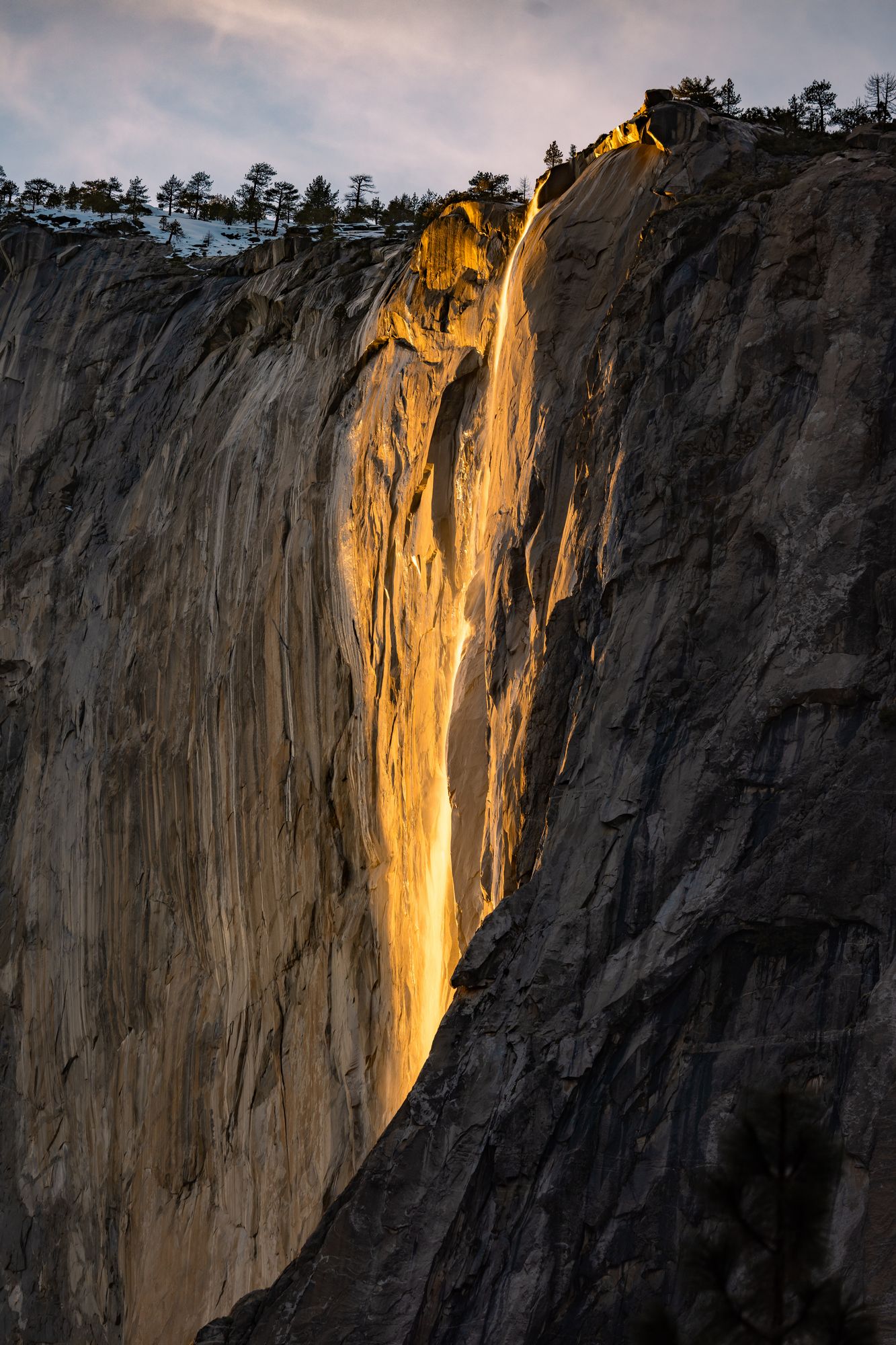
Horsetail Falls during Firefall
The best time to see the Firefall is around 5 to 15 minutes before sunset, but weather conditions also have to be ideal for the phenomenon to happen. Though the skies were cloudy all day during my trip, I was incredibly lucky to have it clear up just in time for the sunset to come down. It felt miraculous seeing those blazing waters pour down from afar.
You can see my view of the Firefall in this reel!
People all across the country travel to Yosemite just to see this miraculous event, and thus the park gets quite crowded during this time. This year the park asked visitors to reserve their spots during the weekends of February, so you’ll want to check the park website for instructions next year.
As a general rule, if you’re visiting on the weekend, you’ll want to come during the late morning or early weekend to get the best viewing spots near the El Capitan Picnic Area. Since you’ll be waiting for some time in the cold weather, remember to pack extra layers of clothes and other equipment to keep you warm! I brought a camping chair, a heated blanket, warm clothes and shoes, a thermostat with hot drinks, and some snacks to enjoy my time there.
Things to keep in mind
Many services and trails in Yosemite will be closed due to the weather in winter. If you’re riding in a car, you won’t be able to drive through Glacier Point Road or Tioga Road throughout the season. Furthermore, the colder weather may block access to other facilities as well, so just remember what might be closed during the season.
Snowfall doesn’t come down as often as you may expect in the park. Normally, January will be the best time to enjoy the park’s wonderland, but those conditions still depend on the weather. If you want to see the park at the peak of its beauty, be sure to check the weather forecast regularly and come to Yosemite within a week after a snowstorm.
Here’s a quick step-by-step on how to check for snow in the park:
Watch the NPS webcams to see the snowfall in any place you have in mind. If you see a lot of snow on the trees, it means it’s a great time to schedule a visit.
Check the forecast again to see if there will be another snowstorm in the upcoming week, as you’ll want to avoid traveling in the middle of one.
Before you head out, scroll through Yosemite National Park’s official website and Instagram to see the road conditions. Rangers might still be cleaning the snow off the roads to keep them safe for travelers!
Remember that chains are required to enter the park in winter most of the time. If you’re new to it, I suggest self-tightening chains, as they are the easiest to put on. You can get my favorite chains here.
Put chains on if there’s a layer of snow or ice on the road. If you find yourself on the road without one, you can drive slowly to the next pullover to put them on. Remember to remove chains on dry pavement.
Finally, if you get stuck in the snow, don’t panic! It’s perfectly normal and there will be people around to help you push your car off the road. It only takes two or three people to push, and Yosemite still has plenty of guards and kind visitors who’ll be willing to lend you a hand.
Yosemite in Spring
Yosemite’s Spring season begins around April and breathes new life into the park. Depending on the time of your spring visit, you may feel the same cold chill from winter or the warm breath of a coming summer.
By this time, most of the snow has melted and many of the roads will be reopened for the new season. As an added plus-side, the park is usually still tranquil during early Spring, shortening most of the traffic through the Valley.
Why you should visit
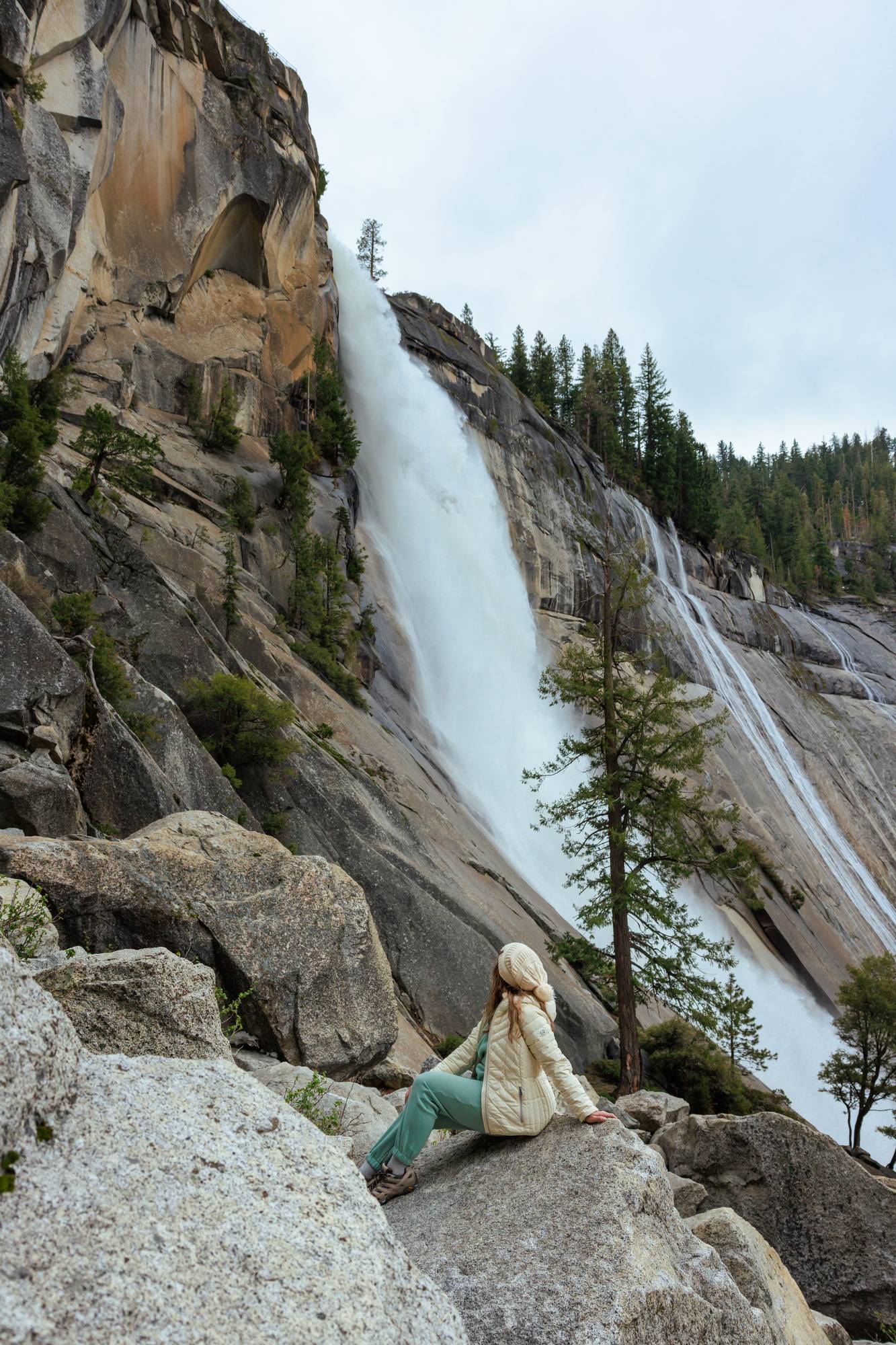

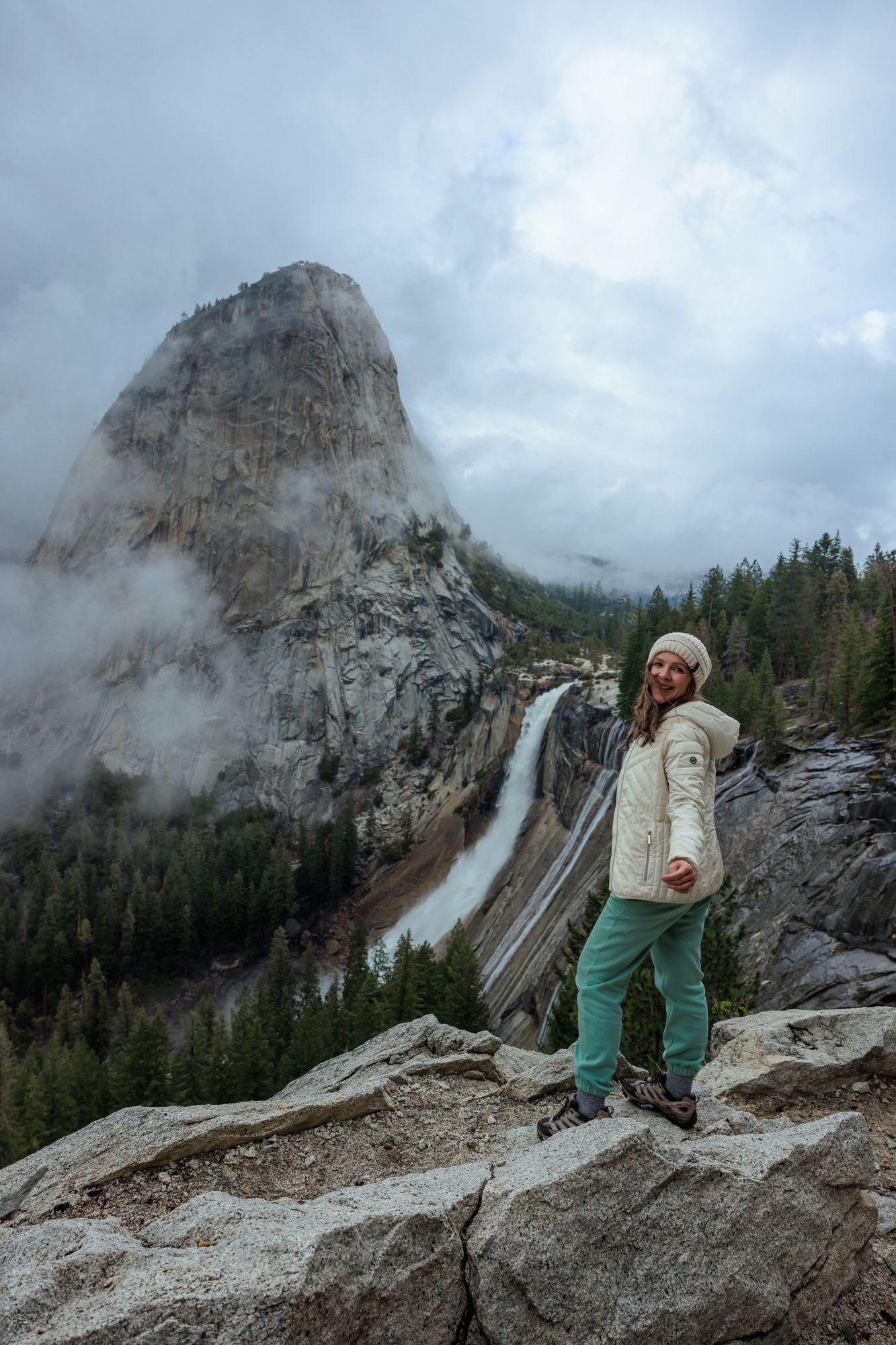
Spring in Yosemite: Nevada Falls and Vernal Falls
Spring in Yosemite is best known as waterfall season. When the snow begins to melt at the peaks of the mountains and rock formations, water runs down to the rivers of Yosemite, before bursting out quite dramatically down the cliffsides. If you love chasing waterfalls, this is the best time to find them.
Here are just some of my favorite waterfalls in Yosemite:
Yosemite Falls (easy): Arguably the most iconic waterfall in the park, Yosemite Falls is incredibly easy to admire. You can either look at it from the Valley or take a short hike to the Lower Falls. In Spring, the water rushes down and sprays hikers with cool, refreshing mists. I highly recommend taking the Lower Falls trail–it is only 1 mile long and is very easy to complete.
Bridalveil Falls (easy): This will probably be the first waterfall you see when you enter the Valley. Though it’s named after the delicate curtain of water that resembles a wedding shroud in the Summer and Fall, Bridalveil Falls bursts out and becomes an extraordinary sight in Spring. The trail to Bridalveil is just as easy as Yosemite Falls’, only 0.5 miles long and taking 20 minutes to finish.
Vernal Falls and Nevada Falls (hard): The Mist Trail leads up to these two waterfalls, and it’s one of the most popular trails in Yosemite. Typically only opening in early May, the trail is named after the beautiful mist that surrounds the bottom of the waterfalls. It can be quite challenging to climb, being around 6.4 miles long and taking over 4 hours to finish, but it’s a must-see attraction in the spring!
Some of these waterfalls I’ve listed in a previous article–if you’re looking for more waterfalls in California, check it out!
Most of the roads in Yosemite will start opening back up during Spring, though Tioga and Glacier Point may remain closed because of the snow. The mountains and rock formations are still capped with snow, but flowers will already start sprouting from the trail grounds at this time. This contrast makes Spring a wonderful time to hike through the park.
The rush of water also gives you the chance to try out water rafting! Most rafting facilities are held in the Valley or the Merced River around spring and summer, but strong currents and cool waters make spring one of the best times to try it.
Things to keep in mind
As mentioned before, early Spring often still has the same chilly gusts of wind blowing through the trees, so remember to bring some extra layers ahead of time. You may also want to bring car chains just in case!
Spring also brings a new challenge to Yosemite visitors: flooding. The same melting snow that leads to the trickle of waterfalls may also flow onto the roads or hiking trails. Interestingly, the national park concluded that stronger floods often come around evening time, so you’ll likely be perfectly fine on your trip.
From my personal experience, flooding did surprise me while hiking the trails. The Mist Trail looks otherworldly and mystical on camera, but I did get a little damp on my trip back. The waterfalls are still incredibly beautiful, though! I’d just recommend bringing a raincoat and some waterproof boots before heading there.
Make sure to update your information with the park’s road conditions before heading out in the season.
Yosemite in Summer
Yosemite’s Summer starts in June and ends around September. The park’s high season starts sometime around June, leading to a very busy park atmosphere in this season. Coupled with the pleasant weather, the season is one of the best times to bring larger gatherings of people to the park.
Most of the waterfalls still flow early into the summer, but they’ll begin to dry out later into the season. The warm temperatures also sprout new life across the park, making it a perfect time for hikers and backpackers to explore the park trails.
Why you should visit
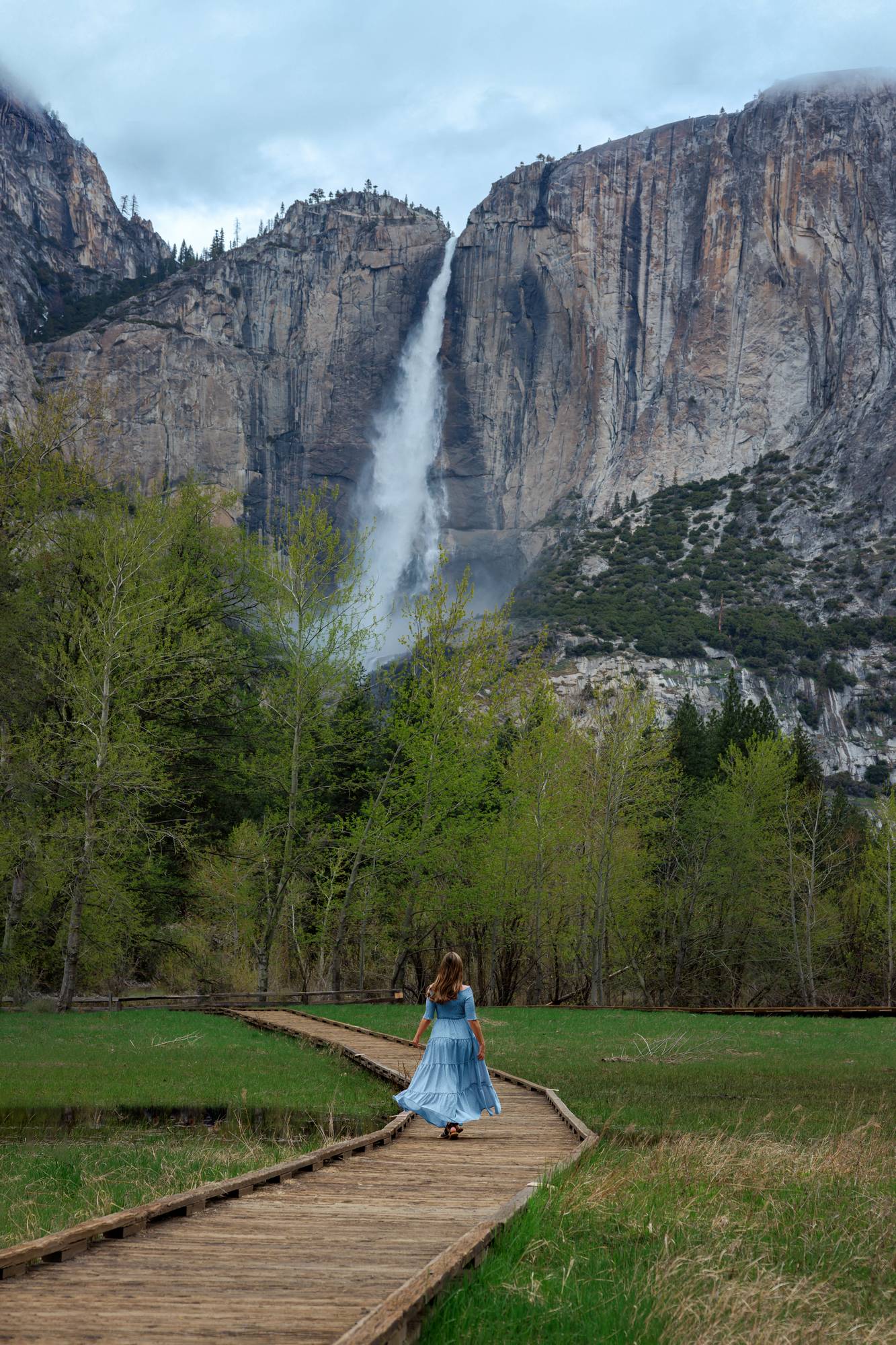
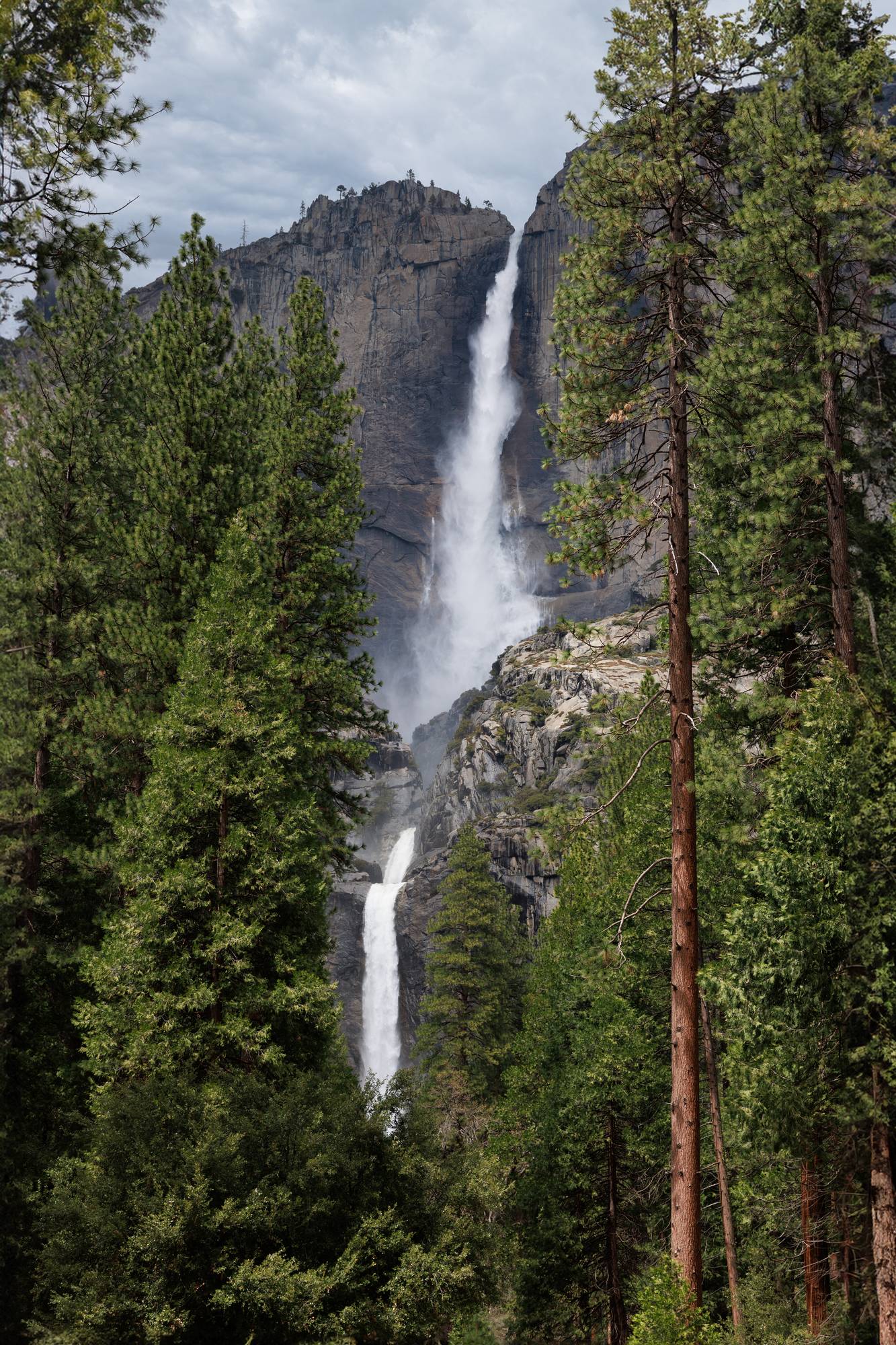

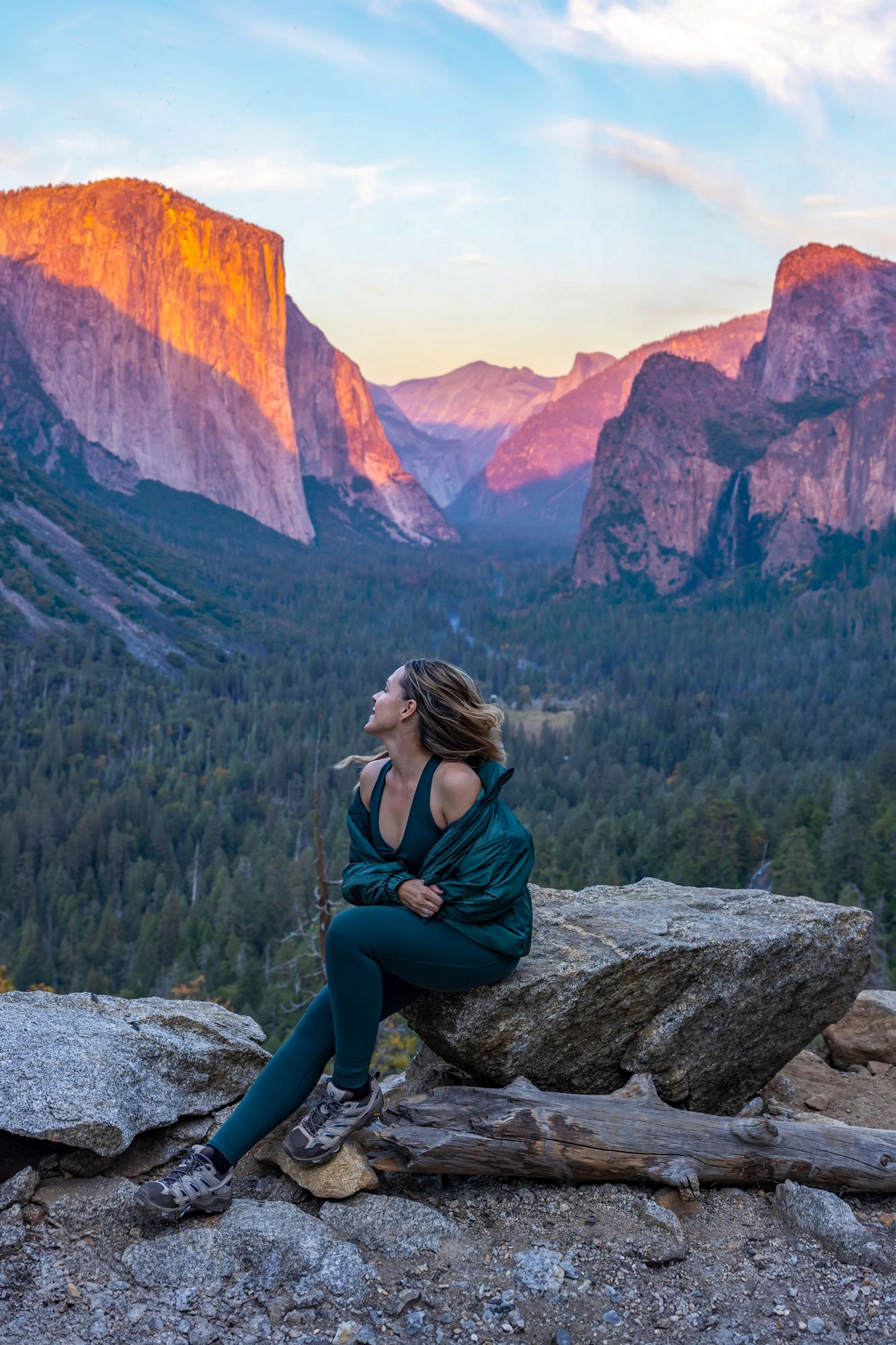

Summer in Yosemite: Yosemite Falls, Yosemite Valley, Artists Point, Glacier Point
The summer is kind to the Valley, as much of the weather is very pleasant. You’ll be able to hike through peacefully and enjoy all the views the park has to offer. The sequoia groves and forests are especially magnificent during this season.
All of the roads and facilities open by mid-June, making summer the most convenient time to take a bus or car to travel around the park. There are also wilderness and visitor centers with active rangers that may help new travelers navigate the park’s terrain.
Things to keep in mind
Summer is often the most packed Yosemite gets every year. Due to the warm weather bringing in many people across the country, you’ll want to make an advanced reservation to the park’s lodgings and facilities. Check out the park’s reservation website to plan your trip as soon as possible!
This year, the park will roll out a new Peak Hours Plus reservation pass to drive into Yosemite during peak times. It’s $2 per ticket and is required if you’re visiting from mid-April to late June and mid-August to late October from 5 AM to 4 PM on the weekends and holidays. From early July to mid-August, you’ll need this reservation for all days during the same times. Keep in mind that you’ll also need to pay the $ 35-per-car entrance fee on top of the reservation pass.
Reserving a ticket to the park also needs some careful planning. Tickets start being sold on the website at 7 AM Pacific time, so you should keep your eyes before that time to book a reservation. You’ll also want to book a reservation several weeks in advance depending on the area you’re looking to visit.
Finding parking spots can also be very challenging during this time of year. There was once a time when my group and I had to drive for over 2 hours around the park just to find a single parking space! Be sure to get ahead of the crowd and find your parking space before 8 AM.
Furthermore, if you plan to ride through the Valley, be prepared for some traffic. Bring snacks and some onboard entertainment when going with a family, and some nice tunes while heading out on your own.
Don’t worry, the views of Yosemite in the summer are well worth the wait! It’s not a surprise people crowd around the park when it looks like this.
Yosemite in Fall
I’ve posted before about my love of Fall in California, and I truly think it’s one of the best seasons to take in the state’s nature. Yosemite’s Fall season only runs around late September to October, but it shimmers brilliantly in those short months.
The fall foliage is gorgeous, and compared to the bustle of summer, the season is much quieter and more reflective. You can feel the winds brushing through the trees and the sun bristling against the colder air. The soothing weather makes it a perfect time to visit more picturesque areas in the park.
Why you should visit
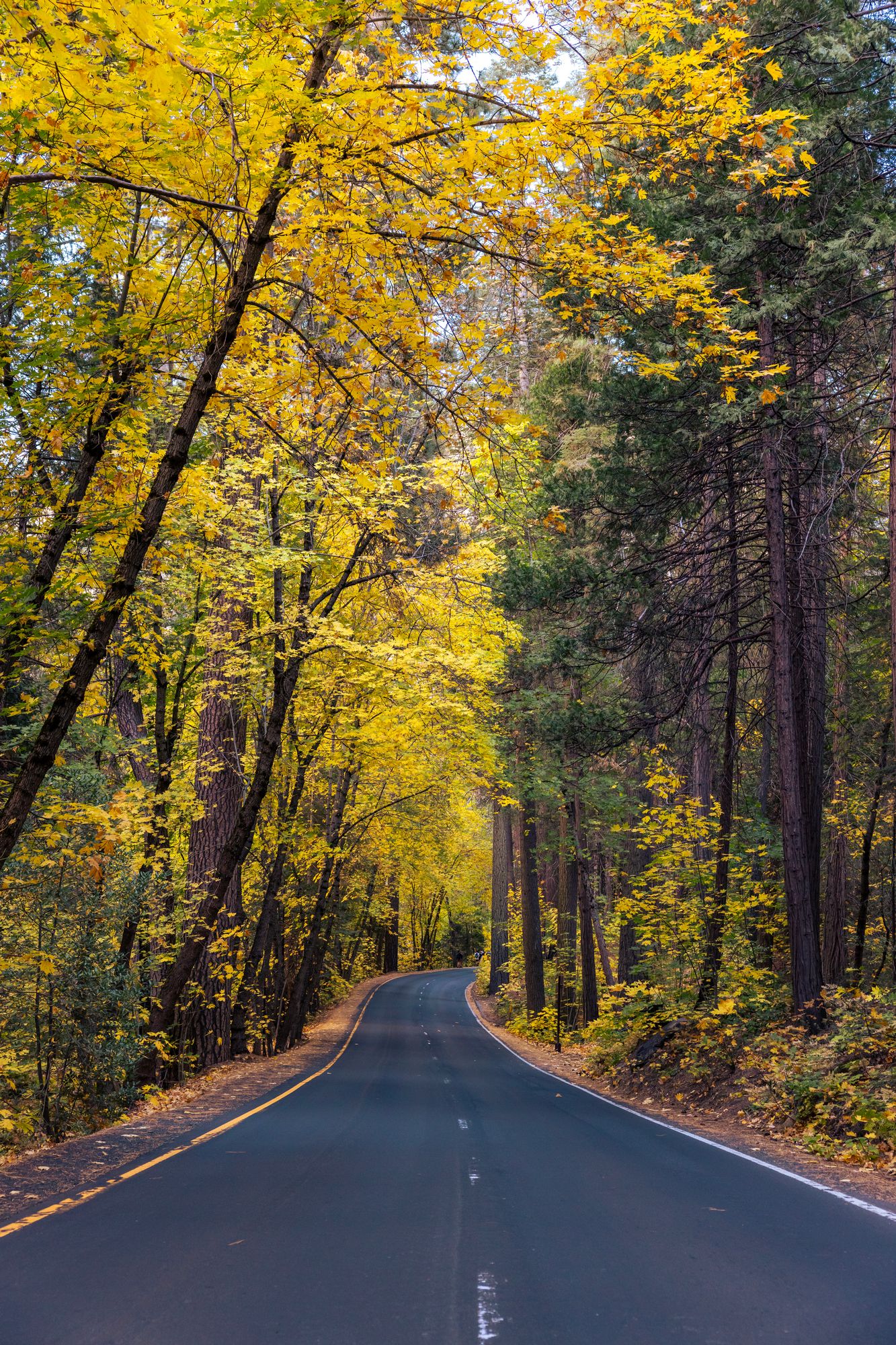
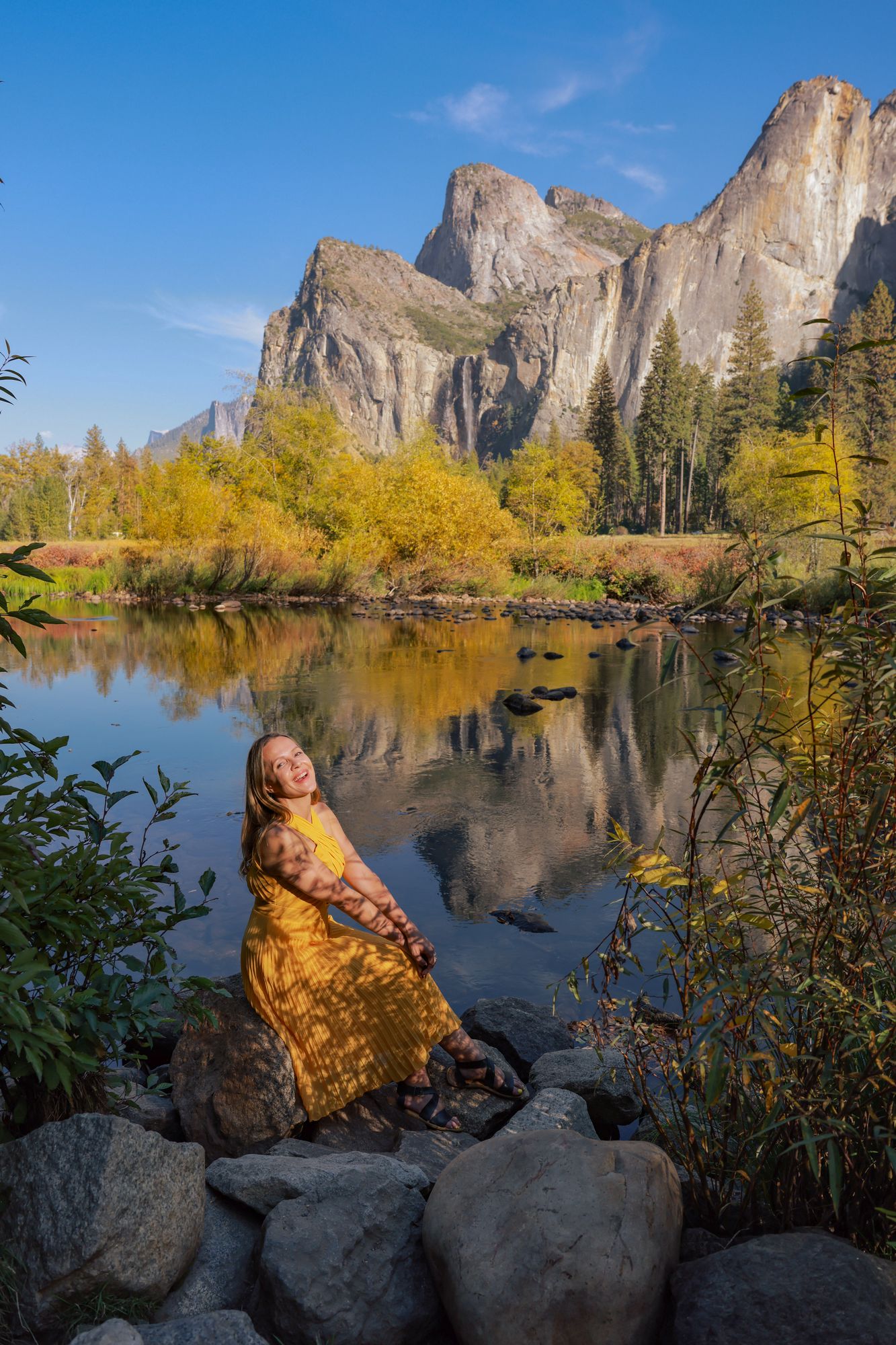
Fall in Yosemite: Yosemite Valley, the Valley by the Lake, Taft’s Point
The groves and forests are yellow in this season, leaving a golden glow throughout Yosemite. The cool air makes this a great time to hike around the sequoia trees, taking pictures of the transforming landscape along the way.
Being less crowded but not too chilly yet, fall might be the best time to enjoy some more strenuous activities around the park. If you’re more adventurous and able, you might want to try wall climbing. The Merced River Canyon and El Capitan are especially popular climbing spots in this season.
You might also want to admire the park from the view of a historical railroad. The Yosemite Mountain Sugar Pine Railroad is open throughout the year, but in the first weeks of November, it becomes a great way to see the colorful trees all around the park!
The ride is an hour long and is available through reservations on their website. Ticket prices range from $30 for adults and $18 for kids, but there’s a first-class ticket costing around $60-75 as well.
Things to keep in mind
By this time, Summer will have dried most of the waterfalls, so it isn’t ideal to visit them during the Fall.
Most people who come by during the Fall season look forward to the changing colors of the forest around them. Though this is a great highlight of the season in Yosemite, it can be hard to predict at times. Many of the trees in Yosemite are evergreen, so they aren’t prone to changing colors in the season. For the deciduous trees that remain, rain or early snow may lead to their golden leaves falling too quickly.
If weather conditions are ideal, you’ll likely be able to admire the orange and yellow rays of fall sometime in mid-October. Keep in mind to constantly check for further information in case snow comes early this fall.
What season do you think is the best? Are you visiting Yosemite this year?
Do you love exploring in California? I created an interactive map just for you! Check out my California Travel Map with over 500 pins of the best spots and hidden gems for California Travel!
Are you looking for more California nature travel inspiration? Read: Best Redwood Forests in California

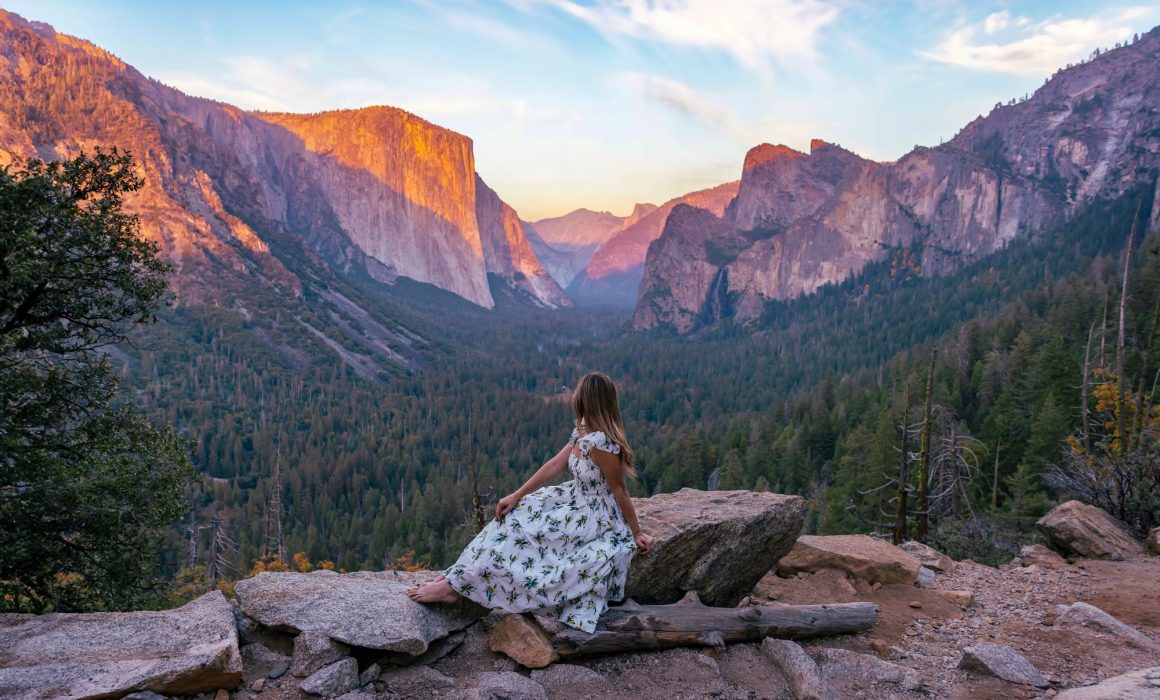
Pingback: The Ultimate 2-Week California Road Trip Itinerary From a Local - Asya Olson Travel Photography